Japanese Women, or Japanese Diet, was developed by nutritionists at YaELO Clinic (Yaeks). The principle of this technique is based on the use of low-calorie foods for 7-14 days. Before starting a strict diet, experts recommend that you be mentally prepared-the weight loss system needs to strictly abide by all the rules of the method. This system of getting rid of excess weight is characterized by a long withdrawal time: it lasts 4 weeks. Despite its high effectiveness, this diet can harm the body, especially if there are contraindications.

Principles of weight loss
Japanese food is designed for 7, 14 or 13 days. The correct weight loss is carried out by using foods that contain a lot of protein. Foods high in carbohydrates and fats are excluded from the diet. This technology is considered "salt-free". The initial stage of weight loss is accompanied by the normalization of metabolic processes in the body and the elimination of toxins. The fat burning process starts on day 2-3.
It is impossible to deviate from the system-the diet is strictly regulated. Due to the lack of adequate carbohydrates in the dishes, the duration of the diet should not exceed 14 days. If side effects occur, you need to stop diet therapy immediately. This is the reason for contacting the medical institution. Encourage the use of vitamins and minerals during weight loss, the complex is selected individually. It can take up to a month to withdraw from the diet.
Nutrition rules

Dishes made from permitted foods can quickly fill you up. This is due to the main "building" component in their composition-protein. Carbohydrates and fats enter the body in small amounts. Fiber is found in fresh vegetables and fruits, and their use is not restricted. Soluble dietary fiber helps the normal functioning of the digestive system. Green tea and natural coffee contain antioxidants involved in metabolism.
The carefully selected menu every day provides the body with the necessary nutrients.
The drinking protocol must be followed carefully: at least 1. 5 liters of liquid must be consumed every day. The presence of salt, sugar and hot spices in dishes is unacceptable. The number of meals is limited: no more than 3 times a day. You cannot eat snacks.
Experts recommend giving up sweets and junk food early-this will help avoid collapse. It is recommended to reduce the weight.
Allowed and prohibited products
The list of products allowed for consumption is strictly restricted. For 14 days, the daily menu can include:
- Meat and poultry products;
- a fish;
- bread;
- vegetable;
- fruit;
- Natural freshly squeezed fruit juice;
- Dairy products
- Tea and mineral water.
Vegetables, fruits and vegetables you can eat:
- summer pumpkin;
- Radish;
- eggplant;
- cabbage;
- Apple;
- Pineapple;
- pear;
- Kiwi;
- pomelo;
- Citrus fruits (lemon, orange).
Bread and rusks should be rye. Lean meat (lean beef, chicken, turkey) and fish (hake, blue whiting, cod) are heat-treated. Eggs are allowed, but the quantity is small. Beverages (green tea, natural weak coffee, boiled water) should not contain sweeteners. You can drink tomato juice and low-fat (1%) kefir. Olive oil is included in the diet.
Prohibited food must be completely excluded from the menu. These include:
- Fatty meat and fish;
- Vegetable oil
- Salt and sugar
- fast food;
- Flour products
- Smoked and boiled sausages;
- Semi-finished products and canned food;
- Sweets and pastries;
- Starchy foods (vegetables, grains);
- Alcohol and tobacco products;
- Sauces, marinades.
vegetables and fruits:
- Cherry;
- Cherry;
- Garnet
- Persimmon;
- tangerinr;
- mango;
- Fig;
- passion fruit;
- Grape.
dried fruit:
- Plum;
- raisin;
- Dried apricots
- date.
Japanese people rarely eat dairy products because they are usually lactose intolerant, so they are not included in the diet.
It is necessary to exclude potato chips, sweet popcorn and salty popcorn from the diet. Semolina, barley and millet groats are not used for cooking foods that promote fat burning.
Prohibited flour products:
- Pancake;
- Dumplings;
- Vareniki
- Spaghetti (noodles);
- Pancake;
- Spaghetti;
- Wheat bread
- muffin.

Sweets (candies, biscuits, pastries, rolls, cakes, marshmallows, halva, preserves, jams) are strictly prohibited. Condiments (spices, mayonnaise, ketchup) are not added to the dishes. Any dairy products (sour cream, cheese, fermented baked milk, whole milk, cream) are prohibited.
Meat and sausages:
- pork;
- mutton;
- Ham;
- Boiled pork
- Salou;
- Smoked sausage;
- Uncooked smoked, boiled, dry-cured sausages.
Dried fish, smoked fish and dried fish should be removed from the diet immediately. Poultry meat is only eaten in boiled form. Don't use chocolate, ghee, and butter. Excluding alcoholic beverages and tobacco products 2-3 weeks before weight loss. High-carbonated sweet drinks (lemonade, kvass) are replaced by anhydrous mineral water.
Dried fruit preserves and jelly are not included in the drinking diet. You must also avoid cherries, apples, pomegranates, grapes, and orange juice. Nectar is made from pineapple and tomatoes, and they are consumed in small amounts.
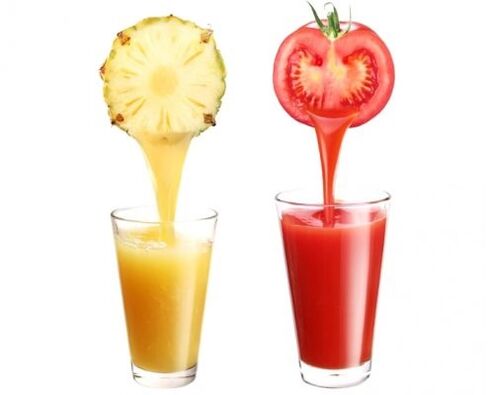
Types of Japanese food
There are 3 types of Japanese food. Their number of days is different:
- 7 days;
- 13 days;
- 14 days.
Regardless of the technique used, the diet plan must be followed.
Diet for 14 days
The salt-free slimming system is designed for 2 weeks. During this period, fat cells will gradually release and burn. In the first three days, the body was purified. During this period, experts recommend drinking plenty of water: boiling water and green tea can speed up the excretion of residual toxins. By convention, the diet can be divided into two phases, each of which lasts for 7 days. In the first stage, the menu contains kefir. Dishes are steamed, fried and fried are ignored.
7-day diet
The most gentle technical design for a week. During this period, you can lose no more than 3-4 kg. The menu is strict, the products are strictly restricted and cannot be replaced. During the weight loss period, reorganization will occur, during which the body will get used to the new diet. Therefore, experts believe that the system is the least effective. The menu may include traditional Japanese dishes made with permitted ingredients. They cannot be supplemented. For people who plan to lose weight based on Japanese women, nutritionists recommend choosing the "lightweight" option.
Diet for 13 days
The operating principle of this type is no different from the previous two. The serving size does not exceed 200 grams, drink it when you are thirsty. Food intake-for 13 days at the same time. All detox nutrition rules must be followed. In less than 2 weeks, the intestines are thoroughly cleaned and the fat burning process takes place gradually, so the skin remains elastic in the problem area. The consumed energy supply is supplemented with protein foods.
Daily meal plan
Slimming dishes are fully adapted to European cuisine and do not contain exotic ingredients. The approximate menu is designed for 7 days and repeats on the 8th day. Drinks are allowed to change: use green tea instead of coffee, and tomato juice instead of kefir. If necessary, the daily standard of the product is divided into 2 parts according to the number of days (weight loss once a week).
Diet plan (14 days):
- Chicken fillet-1 kg;
- Fish fillets-2 kg;
- Lean beef-1 kg;
- Biscuits or rye bread-0. 5 kg;
- Eggs-20;
- Chinese cabbage-2 pieces;
- Zucchini and/or eggplant-1 kg;
- Carrots-2. 5-3 kg;
- Fruit (without sugar)-1 kg;
- Lemon (large)-2 pcs;
- Kefir (low fat)-1 liter;
- Olive oil-(cold pressed)-0. 5 liters;
- Tomato juice (homemade)-1 liter;
- Natural coffee (grain or powder)-1 pack;
- Green (big leaf) tea-1 pack.
The amount of water you drink depends on your age and weight.
The food package is enough for three meals a day. Non-carbonated mineral water can be replaced with boiled water. The minimum amount of liquid per day is 1. 5 liters.
Detailed daily menu plan (by day):
- Breakfast (8. 00)-A cup of light natural coffee. Do not add cream, sugar, or condensed milk. Lunch (13: 00)-Chopped cabbage, add a little olive oil, 2 hard-boiled eggs and 250 ml tomato juice, and stew with its own juice. Dinner (18. 00)-fish (200 g boneless fish fillet), steamed or boiled.
- Breakfast-coffee without milk and sugar, a slice of rye bread. Lunch-stewed cabbage with olive oil and steamed (boiled) fish fillets (100 g). Dinner-boiled beef syrup (100 g) and 250 ml low-fat kefir.
- Breakfast-a cup of light natural coffee and a rye crouton. Lunch-a vegetable stew made with eggplant or zucchini. Dinner-Fresh cabbage salad, seasoned with oil. You can eat 2 eggs and 200 grams of cooked lean beef (meat).
- Breakfast-raw carrot puree, lemon juice. Lunch-Boiled boneless fish fillet (200 g), 250 ml tomato juice. Dinner-unlimited fruits.
- Breakfast-raw carrot puree, lemon juice. Lunch-Boiled boneless fish fillets (200 grams), a glass of tomato juice. Dinner-any amount of fruit.
- Breakfast-coffee or green tea without sugar. Lunch-0. 50 boiled chicken (skinless breast or thigh), fresh vegetable salad (carrots and cabbage) with a little oil. Dinner-boiled eggs (2 pcs), freshly grated carrots and butter salad.
- Breakfast-green tea without sugar. Lunch-stewed or boiled beef slurry. Dinner-any dishes (excluding 3 nights dinner).
The menu can be displayed schematically. Experts recommend placing paper with drawings in a conspicuous place.
The right way to diet
You must adhere to a diet for 2-4 weeks after eating. During weight loss, the body will get used to small portions and low-calorie foods. Avoiding diet is necessary to maintain normal weight and optimal function of the digestive tract. It is recommended to gradually return to a normal diet: add a little carbohydrate-rich food every day. The duration of the posting is at least 14 days.
The meal should be a fraction and should not increase the weight of the part. The diet should be based on food with a small amount of calories and supplement the energy stored in the weight loss process. It is not recommended to reduce the intake of protein foods (eggs, poultry and fish). In the menu, fat and carbohydrates are introduced gradually. Salt and sugar can be added in small amounts. Drinks should be sufficient, not more than 2 liters consumed per day.
During the withdrawal period, cereals are allowed for breakfast. Oats, buckwheat and rice are boiled in water. Any amount of vegetables and fruits can be eaten raw. It is best to choose sweet and sour apple varieties first. Introduce snacks between main meals: a cup of kefir or rice cakes. Rye bread was replaced by whole wheat bread or yeast-free bread.
Pasta and sweets, baked goods and snacks are not included in the diet.
Food costs
Products approved for use during weight loss are in the mid-price category.
Pros and cons
Japanese weight loss techniques have many advantages and disadvantages. Benefits include:
- efficient;
- Availability;
- Clean while losing weight;
- Detailed menu
- Three meals a day;
- Increase muscle tone.
The effect is due to the fast process of fat burning, the effect will appear after 7 days. These products are available to everyone and can be purchased in any store. There is no need to pre-calculate calories, and the menu is clearly written. Eat 3 times a day, the diet is light, so hunger seldom occurs. Cleaning the body helps to normalize the metabolic process. Due to the high protein content of food, muscle structure is strengthened.
weakness is:
- Unbalanced diet;
- Lack of vitamins and minerals;
- Lack of a good breakfast;
- Need to follow the rules of withdrawal from diet;
- Short-term weight loss;
- Contraindications.
An unbalanced diet and non-compliance with fat, protein, and carbohydrate ratios increase the risk of side effects. Against the background of a lack of vitamins in the body, the natural defense response is reduced, and the condition of nails and hair deteriorates. The right way of eating can prevent the development of stressful situations, which can lead to rapid weight gain.
Contraindications and hazards

This diet is only suitable for healthy people. Before losing weight, you must undergo an examination and consult a nutritionist. Contraindications include:
- Get pregnant at any time;
- breast-feeding;
- Stomach and duodenal ulcer;
- Erosive damage to the digestive system;
- Pathology of the kidneys and liver, including failure;
- anemia;
- Gallbladder disease;
- Infectious diseases
- Pathology of the cardiovascular system;
- Vitamin deficiency;
- diabetes;
- Blood pressure spikes;
- Worsening of chronic diseases;
- gout.
This diet is not suitable for the elderly and teenagers. Any behavior that does not follow the general rules of the technology will increase the risk of side effects. In the early stages, nausea and bowel problems (constipation or diarrhea) may occur. Indigestion is accompanied by excessive flatulence or colic. Bad breath, heartburn, and hiccups appear. The headache occurs in the context of a complete rejection of sugar.
Neurosis and sleep disorders develop for the same reason. Due to lack of fat, a bitter taste appeared in the mouth. The appearance may deteriorate: the skin becomes pale and dry. Lack of nutrition can cause joint pain.
Diet recipes
When you exit, the weight loss meal will be added to the menu. You can diversify your diet with salads, first course and second course. Homemade low-sugar desserts can improve brain function and can be eaten after 14-15 days.
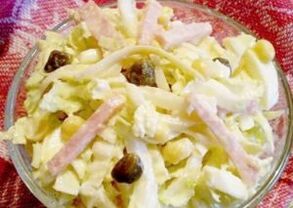
The weight loss salad "Hope" includes the following ingredients:
- Potatoes-(2 pieces);
- Milk sausage-(2 pcs);
- Chicken breast-(250 g);
- Pickled cucumber-(1 piece);
- Green vegetables;
- Salt;
- Olive oil-(1 tablespoon).
Cut the cooked potatoes, cooked chicken and sausage into cubes. Put the clumps in a deep bowl and season with salt. Add sliced cucumber and chopped vegetables.
Season the salad with olive oil (squeeze first).
Cabbage Salad:
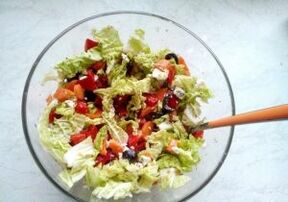
- Beijing cabbage-(250 grams);
- Fresh cucumbers and tomatoes-(250 g);
- Chili-(1 piece);
- Hard cheese-(150 grams);
- Salt;
- Olives (1/2 can);
- olive oil.
Tear the Chinese cabbage leaves into small pieces with your hands. Cut cucumbers and tomatoes into large pieces. Chop the pepper (half a vegetable) in a blender. Mix all ingredients, salt and oil to taste. Decorate the salad with grated cheese and olives.
The first dish is eaten at lunch time. To make it easier to digest, the soup is prepared into puree. Spinach and Celery Soup:
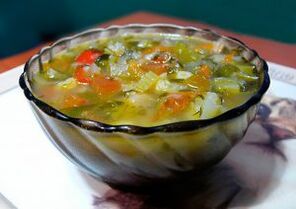
- Lemon-(1 piece);
- Tomatoes-(2 pcs);
- Spinach-(200 grams);
- Celery-(stem, 2 pieces);
- Green vegetables;
- Vegetable soup-(1. 5 liters);
- Salt;
- Olive oil-(1 tablespoon liter).
Pour the olive oil into the preheated pan. Chop the celery stalks and saute them in oil until fragrant. In a separate pan, bring the broth to a boil, add the chopped spinach to it, and simmer for 5-7 minutes. Remove the skin of the tomatoes and grind them with a blender. Add tomato paste to the spinach. Salt the broth and add it to the frying. Cook for 15-20 minutes. Add a little lemon juice and chopped herbs to the finished soup.
Mushroom Cream Soup:
- Shiitake-(8 pieces);
- Potatoes-(2 pieces);
- Zucchini-(300 grams);
- Carrot-(1 piece);
- Onion-(1 piece);
- Weak broth-(1 l);
- Flour-(1 tablespoon liter);
- Olive oil-(2 tablespoons liters);
- Cream-(1 tablespoon liter).
Cut the cooked vegetables into small cubes and chop them in a blender. Bring the broth to a boil. Fry the flour until golden brown, add broth, add vegetable puree. Boil the soup over low heat until thick, then add salt, cream and herbs to garnish. The first dish is served with rye croutons.
Goulash with vegetables:
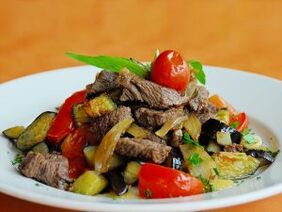
- Beef-(500 grams);
- Olive oil-(3 tablespoons liters);
- Potatoes-(200 grams);
- Carrot-(1 piece);
- Bell pepper-(1 piece);
- Onion-(1 piece).
Spread the onion, bell pepper, and grated carrot in a half circle in olive oil. Boil the beef until half cooked, cool and cut into small strips. Put the meat on the fried vegetables and add salt. Put the sliced potatoes on top. Add salt again. Pour the broth into the vegetables. Cook this dish on low heat for 25-30 minutes.
The Indian praying mantis is a dietary dish, and its production process is carried out in two stages. Dough material:
- Flour-(1. 5 cups);
- Warm water-(1 cup);
- Salt.
Dissolve the salt in warm water. Pour the flour on the work surface and make a depression in it. Pour the salt water in portions, and gradually knead it into a flexible dough. Cover with a towel and let stand for 15-20 minutes.
When the dough "fits", you need to prepare the seasoning. Required components:
- Shiitake-(6-8 pieces);
- Carrot-(1 piece);
- Scallions-(4-5 feathers);
- Zucchini-(400 grams);
- Olive oil-(2 tablespoons liters);
- Tomato sauce-(2 tablespoons l. );
- Chicken fillet-(400 grams).
Cut shiitake mushrooms, zucchini and carrots into small cubes. Boil the chicken breast and cut into strips. Saute the onions in oil and tomato sauce. Gradually add carrots, zucchini, mushrooms and meat. Pour 150-200 ml of water into the frying, then simmer the vegetables until tender.
Roll the dough into thin strips and coat each strip with oil. Cut the strips into squares (10x10 cm) and stack them together. Steam the dough in a pressure cooker or slow cooker for 15-20 minutes. The "pillars" of the dough are placed on a plate, topped with vegetable sauce and sprinkled with herbs.
Results and comments
In 2 weeks, you can lose 8-9 kg of weight. Most women and men who use this technique to lose weight are positive about it.
First trial, female, 36 years old
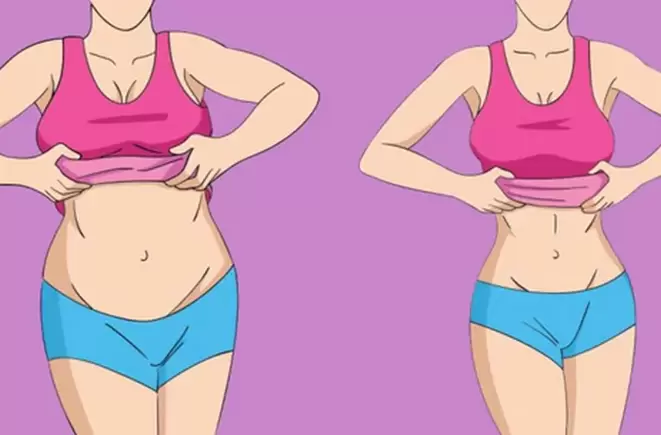
I started recovering during adolescence and I tried many diets-they didn't help. I went to see a nutritionist, had a physical examination, ate separately, constantly counted calories, and arranged fasting days, and only lost 2 kg in 5 months. The Japanese fat burning system was recommended by a friend, and I failed to lose 7 kg in two weeks. I decided to give it a try.
Medical examination found no contraindications. The nutritionist gave detailed dietary advice. The system does not require a large amount of material investment. On the advice of the doctor, she drew up the menu in detail and pasted the paper on the refrigerator. I almost couldn't eat it for the first 3 days: the portion seemed to be small, and the hunger persisted. It was much easier on the 4th day. I tried to chew the food longer and drink more liquids.
The second stage of weight loss passed quickly. I cook on the machine: I remember the ingredients and weight of the dishes. The food began to look satisfying, and the hunger almost disappeared. Except for a short-term headache on day 3, there are no side effects. The nutritionist explained that this was due to lack of sugar. I gave up eating for 20 days. I like the food at the outlet, so I completely give up sweet, fatty, salty and smoky food. I am satisfied with the result: I lost 10, 5 kg in 2 weeks. I will use this weight loss system again in six months.
Second review, female, 28
I learned about this technology two years ago. At that time, her weight was 107 kg, an increase of 164. This number is very important. I have a health problem and I am not satisfied with my appearance. Her friends were unable to suggest an effective diet, so she decided to consult an expert. The doctor recommends trying to use the Japanese weight loss system to lose weight. The long shopping list was frightened at first, but the nutritionist was relieved and explained the diet in detail.
In 7 days, it took 5 kg. The dishes on the menu are very generous, and I had one. At first, there was slight dizziness and slight intestinal discomfort. The side effects disappear by themselves. She eats at the same time. The second stage of weight loss is easy: there is light, appearance and overall health improvement. Due to a diet, I quit smoking and quit drinking completely. It weighed 13 kg during the release. 1. I have been eating correctly for 5 years, I have been swimming and jogging, and my previous weight has not recovered.

















































































